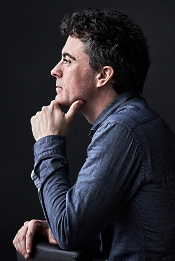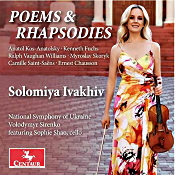By John J. Puccio
Anyone who doesn’t think that Avatusian composer-writer-producer-director-spot-remover J. Cameron Mozert’s 2022 movie epic Avatus: A Musical Opera isn’t the best 4K/4-D movie-musical-opera rip-off ever made is obviously unable to comprehend the genius behind this monumental project and deserves whatever ill fortune fate has reserved for him. In other words, if you don’t like this movie, you’re an idiot.
J.C. Mozert has generally reserved his best work for small-scale projects like Terminatoricus, Titanicus, and Aliens in the Atticus, but this time he has outdone himself with a musical opera so natural, so lifelike, so genuine, you’d think he used real people to perform it. Avatus: A Musical Opera (music by J.C. Mozert; lyrics by Mahatma Kane Jeeves; words by W. C. Dukenfield) stars counter-soprano Leonardo Di Capricorn as Jake Dawson; basso-profundo Kate Winstone as Rose Butler; alto-sexist Clarke Gable as Rhett Butler; mezzo-neen Sigorney Weaving as Robert Ripley; renowned hopscotch authority and part-time hockey puck Morgan Freeperson as The Great Mandala; and the incomparable Mac Demon as Francois “Sparkling” Perrier. Lt. Sir Cedric Noel Vivian Barnstable III and his Band That Plays for Fun support the singers with a deferentially recalcitrant opprobrium.
The music explores one man’s vision to bring to the masses of a dying planet, Avatus, the rugged indoor sports event known as Mallet-Style Quidditch (or MS Quidditch), a variation on the hammer throw and tiddly winks, using large wooden mallets. (And not be confused with Mullet-Style Quidditch, which requires participants wear their hair short in the front and long in the back).
Needless to say, the people of Avatus are reluctant to take up a new sport, far more content to continue their time-honored amusement of killing one another for power and wealth. Even Mandala, His Greatness, an instant fan of MS Quidditch, is appalled at his own Avatusians’ willingness to shed blood over trivialities like war and peace rather than over something really important like MS Quidditch. Nevertheless, the Greater Mandala plunges forward, organizing an MS Quidditch team to equal any in the universe. Since it turns out there are no other MS Quidditch teams in the universe, this is far easier done than said.
Unfortunately, no one in the known universe has ever figured out the rules for playing MS Quidditch, which somewhat limits the scope of its promise. But it does not stop either Mandala the Greater-Than-Anybody-Else or Mozert the Not-Really-So- Entirely-Great from forging headlong ahead in heading up their head count of headcheese (a necessary ingredient in any MS Quidditch game worthy of the name, although for what purpose, no one has determined).
By bringing MS Quidditch to Avatus, the Greatest of All Mandalas saves the sports-starved peoples of the planet from near extinction by encouraging them to stay in school, get high grades, go to college, become good citizens, cure cancer, end bigotry, prejudice, and hatred, establish eternal peace, and live long and prosper. More important, the Intergalactic Sports Television Network makes a fortune.
We interrupt this review for an important message from our sponsors:
Have you been in a accident? Do you suffer from Post-Accident Depression (PAD)? Are you looking for legal remuneration for the incident? Look no further than the firm of J. Justice Justin and Clarence Calhoon Case, fair, proven, and cheap. Remember, when you need help, come to us, Justin-Case.
We now return you to our regularly scheduled review:
Anyway, that’s about all the plot there is to the plot, plot wise, but the opera’s undoubted pleasures are its visual splendors rather than its narrative, and these splendors are simply splendiforous. Di Capricorn is divine, Winstone is winsome, Gable is glorious, Weaving is wonderful, Freeperson is frabulous, and, as expected, Demon is darling, especially in 4K/4-D. To feast one’s eyes on these individuals in all their grandeur is a banquet to behold. Which is about all one can do when one is hungry, stuck in a theater with 800 other people, and can find no way to the refreshment stand (or the exit doors). Oh, and there’s some singing in the opera, too. So there’s that.
Video:
Not content with conventional 2-D or gimmicky 3-D, this Blur-ray disc brings us Avatus, the Musical Opera in all its 4K/4-D theatrical-release glory. (A 4K four-dimensional motion picture provides an audience not only with the dimensions of height, width, and depth but adds the sensation of touch as well. Things don’t just jump off the screen at viewers, they actually hit them. This has inevitably led to several law suits (see our sponsors) from patrons claiming to have been maimed by flying MS Quidditch chips, but I understand most of the suits have been settled out of Quidditch court. I, myself, have never been struck by any flying objects during a 4-D movie, although a poorly thrown MS Quidditch grenade narrowly missed me on several occasions. I also understand that at least three actresses in 4-D movies have claimed they were casually caressed by overzealous theater patrons, again unsubstantiated, although what 4-D activities one pursues while in the privacy of one’s home is another matter entirely.)
Incidentally, the folks at Really Big Pictures are also making Avatus, the Musical Opera available on a standard-definition Digital Ultimate Disc (DUD), but, really, who would want the movie on an ordinary DUD when you could buy the 4K/4-D Blur-ray edition?
Audio:
Here, we get a loss-leader soundtrack in DDT-LSMFT 20.35 surround that closely matches what several people claim they heard in a theater. Is it worth upgrading your audio system to 20.35 for a single motion picture? The answer is a resounding, Yes! Especially when you consider that there is no way on Earth (or on Avatus) that you could fully understand or appreciate the game of Mallet-Style Quidditch without 20.35 speakers. Well, to be fair, there is no way on Earth (or on Avatus) you could understand or appreciate the game of MS Quidditch under any circumstances, but that’s beside the point.
Oh, and the sound is pretty sound, too.
Extras:
Because of the film’s raging length--5 days, 6 hours, 27 minutes, 30 seconds (or 7,227.5 minutes for the minutely minded, or 433,650 seconds for the compulsively compulsive)--Really Big Pictures didn’t have a whole lot of room left over for too many extras, even using a bi-quadral, multiplex-layered, high-capacity Blur-ray disc. So about the only supplemental materials we get are two of J. Cameron Mozert’s younger brother’s briefer briefs, Alienicus from 1986 and Aliensicus from 1997. Of course, they don’t compare with big brother J.C.’s monumental achievement, but they are useful to have around.
In addition, the disc contains approximately 4.7 scene selections; a six-hour theatrical trailer; Danish as the only spoken language; and some fishy-looking captions for the herring impaired.
Parting Thoughts:
Words cannot adequately express the joy, elation, bliss, delight, happiness, felicity, rapture, ecstasy, jubilation, enchantment, exultation, exhilaration, joie de vivre, or downright really good feelings one gets from watching Avatus, the Musical Opera, be it on the big 360-degree wraparound 4K/4-D screen at your local movie theater or on the 3” x 6” cell phone you use at home. Mark my words, Mark, Avatus, the Musical Opera will go down in history as one of the greatest film adaptations of an Avatus, the Musical Opera opera ever made.
And anyone who says otherwise is an idiot.
Cautionary Note:
A 4K/4-D Blur-ray disc must only be played on compatible 4K/4-D Blur-ray equipment (4K/4-D television, 4K/4-D Blur-ray player, 4K/4-D Blur-ray receiver, 4K/4-D Blur-ray speakers, 4K/4-D Blur-ray speaker wire, 4K/4-D Blur-ray goggles, 4K/4-D Blur-ray gloves, and 4K/4-D Blur-ray couch). Any attempt to play a 4K/4-D Blur-ray disc on an ordinary Blu-ray, DVD, HD DVD, LD, VHS, Betamax, Victrola, Dictaphone, or Vitaphone player will result in grievous bodily harm. For more information on the availability of compatible 4K/4-D Blur-ray equipment, visit https//:www.wereouttosoakyouforeverythingyouvegot.con.
JJP
To listen to an excerpt from this album, click below:






























